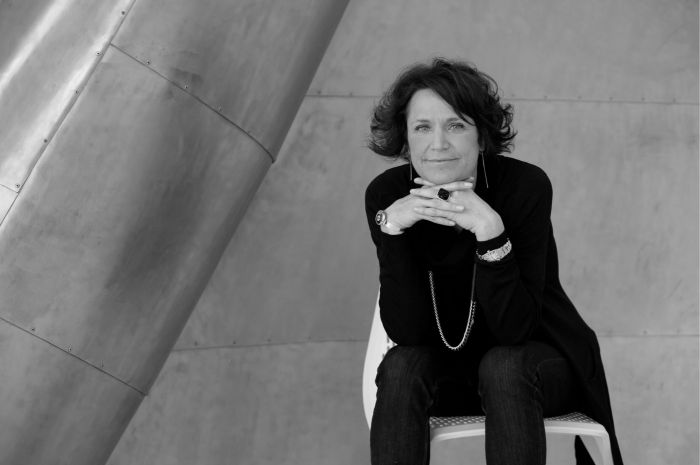凤凰艺术 2016-06-08 11:17
“Historicode:萧条与供给”——第三届南京国际美术展已于2016年6月1日召开了新闻发布会向世人揭开了神秘的面纱,而就这次展览的主题,联合策展人莱蒂奇娅·拉加利亚(Letizia Ragaglia)也给出了她的阐释:
“Historicode:萧条与供给”独辟视角,专注于1990年后的艺术创作。这显然并非随意选择的日期,1990年代表了重要的历史分割点。在全球政治领域,它标志了冷战的终结和对后殖民问题的新关注。
此外,尤其是1989年以来,所谓的全球化已经引发众多重要的当代概念问题,改变了对它的单向向量式认知,延伸到未来,变成了更大、涉及范围更广阔的东西。此时,当代决然地脱离了现代范畴,虽然它隐含对现代性和诠释现代性的框架的重新评估。也许,当代性最重要的、至今依然有待分析和阐述的一个认识是确立以不连续方式前进的必要。
按照意大利哲学家乔治•阿甘本的观点,当代意味着分割时间,插入间隙使之可以被解读。为界定当代,我们必须将它与过去比较。因此,过去不再被视为已经完结的因而可以被抹去和遗忘的东西,而是活在现在,必须不断被重新解读诠释的东西。近期艺术的一个突出特征是大量重新解读和重新评估现代概念,在西方这基于一个观念:历史开启可能性维度,不仅通向现代,也通向未来。这意味着过去成为必须要建造的东西。事实上,今天的很多艺术家受哈尔·福斯特所谓的“档案冲动”驱使。此次展出将通过大量不同艺术立场来展示档案冲动概念,即重新解读过去的同时考虑它对现在和未来的责任。
1990年也见证了世界性艺术理念的逐渐扩散。从那时起,所谓的外围艺术不再是一种边缘现象,对于西方艺术和艺术院校规则的质疑由此产生。上世纪80年代,哈瓦那双年展和亚洲非洲其他国际艺术活动的出现已经让西方主导的艺术思想霸权陷入困局,但真正奠定世界艺术急需重新评估的观念是1989年的巴黎“大地魔术师”展。这个展览直到现在依然具有争议性,因而未能成功克服西方和非西方艺术之间的冲突,但它毫无疑问提出了从全球性观点来审视艺术的重要挑战。艺术史学家汉斯·贝尔廷认为1989年是一个基本分水岭,奠定了全球化作为各种当代艺术分析关键词的观念。本次展览肯定也将探讨这些关注要点。引用贝尔廷的话:
"今天的当代艺术不仅是一种新艺术,也是全新类型的艺术、散布全球的艺术。然而,究竟是什么构成了这种新鲜性依然存在争议。这种新鲜性的一大元素就是它不再等同于现代艺术。它自视为当代艺术:不仅因为时间顺序,同样因为象征和意识形态的差异。 "
不仅如此,全球化也和新传输形式和更重要的卫星和互联网通信技术带来的世界经济解放密不可分。然而,这些进程和西方对世界其他地方的开放并不吻合,相反的是,其凸显了经济掌握在少数人手中的霸权式集中。因此在这个意义上,全球化带来了大量的社会问题,比如不平等、不公正和政治冲突。1989年,国家边界开放的同时也成倍增加。因此,很多艺术家专注于探讨全球化的负面影响、(全球化)这个词汇虚假的中立性及其带来的一系列复杂后果。
马提尼克岛出生的法国文人提出的一种构想将世界视为一个群岛,不同文化就像岛屿交互影响但不存在谁主导谁。在《诗学的多样性介绍》中,格利桑对这种克里奥尔化世界提出了这样的构想:
"克里奥尔化暗示汇集起来的文化元素必须具有‘同等价值’才能确保真正的混合。……克里奥尔化 要求参与混合的异类元素必须能够“互补”。这就是说,它们的性质不会因为不断的交流互动发生内在或外在的质变、萎缩。……因此,‘克里奥尔化’一词可以被用于当前的世界局势。这就是说,‘总体性地球’最终得以实现,这一总和状态下,允许相距遥远的异类文化元素在特定条件下并存(在其中任何形式的‘有机’权威不复存在,一切事物的关系就像一个群岛)。"
格利桑的构想带来了所谓全球化的另一个影响:地球已经被一个兼具内部多元化和多中心化的世界取代。这意味着如果我们不再将全球视为一个单元,那么地区和全球之间的冲突——在其中地方元素必须顺应全球趋势——将失去动力和意义。因此,在全球化背景下,地方、区域和国际概念必须允许共存。这个展览呈现的艺术观点强调当代艺术的特征是不同特定文化和社会传统的分层化。
在《实在的回归》中,哈尔·福斯特用一整章描述“商品雕塑”。
"1914年,杜尚将一个瓶架作为艺术品展出。这件作品立刻提出关于审美价值和什么才算是艺术的问题,它暗示在资产阶级背景下,这个价值取决于物品的自主性,即取决于它的抽象意义。但现在看来,这件物品提出了两种对立的价值解读:一方面,就交换价值而言(或者本雅明•瓦尔特所说的‘展示价值’),艺术作品同时也是一件商品;另一方面,就使用价值而言,作为瓶架,艺术作品可能尚无定义。这种不同价值的冲突正是这件现成品引发关键歧义的症结。"
不同的艺术家同样从批判的角度探讨了艺术作为信仰物或商品的尺度,同样,此次展览中也将予以呈现。
以上图片源自于网络,版权归原作者所有

Letizia Ragaglia, Photo by Silva Corvetta
“Historicode:Scarcity and Supply” deliberately focuses on artistic production from 1990 onwards. This date has certainly not been chosen at random as 1990 represents an important break in recent history.
In the sphere of worldwide politics it marks the end of the cold war and a new focus on post-colonial issues. Moreover, since 1989in particular, so-called globalisation has introduced a number of important questions regarding the concept of contemporary that have altered its perception from that of a unidirectional vector extending towards the future, to something with a much larger and more widespread dimension. The contemporary, then, has moved decisively away from the modern, even if it implies a critical reassessment of modernity and the frameworks used to interpret it. Perhaps one of the most important conquests of contemporaneity – a conquest that is still to be analysed and elaborated - is the awareness of the need to move in terms of temporal discontinuity.
According to the Italian philosopher Giorgio Agamben , being contemporary means splitting up time and inserting breaks that make it readable. To define the contemporary we have to compare it to the past. So the past is no longer seen as something that is finished and therefore subject to processes of removal and oblivion, but rather as something that lives in the present and has to be constantly reread and interpreted. Recent art stands out for its vast number of re-readings and reappraisals of the concept of modern, that have been pursued in the West on account of the idea that history opens up a possibilistic dimension, not only to the present, but to the future as well. This means that the past becomes something that has to be constructed. In fact, many artists today, are driven by what Hal Foster has defined as an “archival impulse”. This concept of archival impulse, or a rereading of the past that takes into account its responsibility to both the present and the future will be demonstrated in the exhibition through a number of different artistic stances.
1990 also witnessed the gradual diffusion of the idea of a worldwide art. From then onwards the so-called art of the peripheries ceased to be a marginal phenomenon, a situation that has called into question the canons of western art and the universality of art. In the 1980s, the birth of the Havana Biennial and various other international art events in Africa and Asia had already laid siege to the hegemony exerted by western-focused artistic thought. But, above all, it was the Paris exhibition Magiciens de la terrein 1989 that really established the need for an urgent reappraisal of world art. The exhibition was and remains controversial in so far as it did not succeed in effectively surmounting the conflict between western and non- western art, but did undoubtedly issue the important challenge of examining art from a global point of view. The art historian Hans Belting considers 1989 to be a fundamental watershed that established the concept of globalisation as a keyword in the various analyses of contemporaneity. The exhibition will certainly discuss these considerations too. To quote Belting :
Today’s contemporary art presents itself not only as new art but also as new kind of art, an art that is expanding all over the globe. However, what precisely constitutes this newness is still controversial. One element of its newness is that it is no longer synonymous with modern art. Rather, it sees itself as contemporary: not only in a chronological sense, but also in a symbolic and even ideological sense.
Globalisation is also widelyconnected with the liberalisation of the world economythat has been brought about by newforms of transport, but more importantly by new satellite and internetcommunication technology. These processes, however, in no way coincide with theWest opening up to the rest of the world. On the contrary, they underline thehegemonial concentration of the economy in the hands of a very few. So in thiscase, globalisation brings with it substantial social problems, such asinequality, injustice and political conflict.In 1989, not only did the bordersopen, they also multiplied. The works of many artists therefore focus on thenegative effects of globalisation and the false neutrality of the term thatbrings with it a complex range of consequences.
Édouard Glissant, a French intellectual born in Martinique, developed a vision of the world as an archipelago, where cultures are like islands that interact without dominating each other. In his Introduction to a Poetics of the Diverse Glissant envisages this creolised world as follows,
Today’s contemporary art presents itself not only as new art but also as new kind of art, an art that is expanding all over the globe. However, what precisely constitutes this newness is still controversial. One element of its newness is that it is no longer synonymous with modern art. Rather, it sees itself as contemporary: not only in a chronological sense, but also in a symbolic and even ideological sense.
Glissant's vision introduces another effect of so-called globalisation: the earth has been replaced by a world that is both internally diversified and polycentric. This means that if we no longer think of the globe as a single unit, then the conflict between local and global - which dictates that local elements must adapt to global trends - loses both its strength and meaning. So, under globalisation, local, regional and international dimensions must be allowed to coexist. The exhibition will also present artistic perspectives that emphasize how being contemporary is characterised by a stratification of different and specific cultural and social traditions.
In his The Return of the Real Hal Foster dedicates a chapter to “commodity sculpture”.
In 1914 Duchamp presented a product, a bottle rack, as a work of art. Immediately this object posed the question of aesthetic value, of what counts as art, and it intimated that, in a bourgeois context, this value depends on the autonomy of the object, that is, on its abstraction from the world. But retrospectively this object has prompted two contrary readings of value as well: on the one hand, that the work of art is also defined, as a commodity, in terms of exchange value (or, as Walter Benjamin put it, exhibition value); and, on the other hand, that the work of art might yet be defined, as a bottle rack (say), in terms of use value. This conflict among different values is the crux of the critical ambiguity that the readymade device can put into play.
The dimension of the artwork as a fetish or commodity has also been broached from a critical distance by various artists and this will also be presented in the exhibition.

1990年以后的艺术——联合策展人Letizia Ragaglia关于Historicode 萧条与供给的阐释10200
总策展人 General Curator: 吕澎 Lu Peng
联合策展人 Joint Curator: 莱蒂奇娅·拉加利亚 Letizia Ragaglia
展期 Date: 2016·11·12——2017·2·12
地点 Venue: 百家湖美术馆 BJL Museum